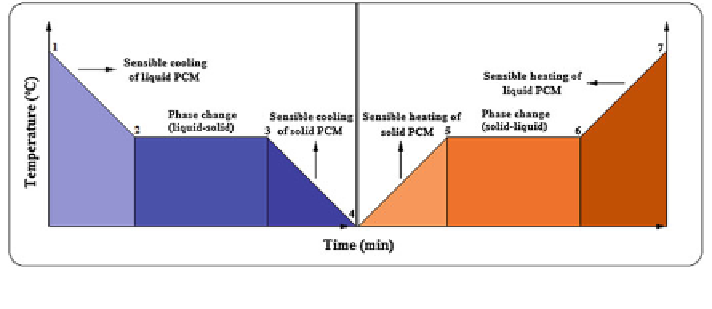Civil Engineering Reference
In-Depth Information
cooling capacity, the reduction in air temperature necessitates for having less air
quantity to be supplied in conditioned rooms, thereby minimizing the total energy
consumption by 15-30 % on the air-handling unit and air distribution fan systems.
6 Phase Change Thermal Energy Storage Technologies
In the modern era, the concept of TES for cooling and heating applications in
buildings has gaining impetus, by the continuous and value-added technological
improvements taking place worldwide. From this perspective, the revelations on
the development of advanced materials for confronting the energy challenges and
energy security are of great importance, in recent years. In this context, the phase
change materials (PCM) serve as an effective platform to bridge the gap present
between the energy supply and energy demand in buildings.
The PCM are a class of heat storage materials capable of storing and releasing
large amount of heat energy by changing their phase at isothermal conditions.
Typically, when the PCM is cooled below its melting temperature, the cold energy
is stored through the phase change of the material from liquid to solid state.
Similarly, when the PCM is heated above its melting temperature, the stored
cold energy is dissipated from the material by virtue of phase change from solid to
liquid state. In reality, there are numerous PCMs available for enabling this
technology to be successfully implemented in buildings.
The theoretical LHS process of the phase change material is depicted in Fig.
16
.
Precisely, in the freezing (charging) process 1-2, the PCM absorbs heat energy
from the surrounding heat transfer medium (chilled water or cool air) and gets
sensibly cooled to its phase transition temperature. During the process 2-3, with
the continuous supply of cold energy, the PCM starts to change its phase, leading
to the formation of solid crystals at constant temperature.
In the process 3-4, the PCM gets further cooled through the sensible heat
addition and attains the temperature as that of the surrounding heat transfer fluid.
Fig. 16
Heat storage and release processes of the PCM

